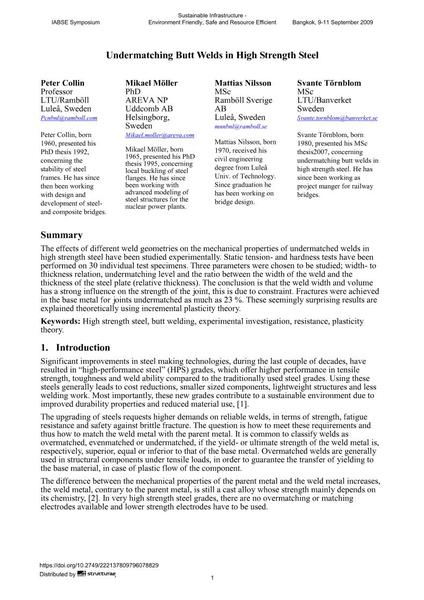Undermatching Butt Welds in High Strength Steel

|
|
|||||||||||
Bibliographic Details
| Author(s): |
Peter Collin
Mikael Möller Mattias Nilsson Svante Törnblom |
||||
|---|---|---|---|---|---|
| Medium: | conference paper | ||||
| Language(s): | English | ||||
| Conference: | IABSE Symposium: Sustainable Infrastructure - Environment Friendly, Safe and Resource Efficient, Bangkok, Thailand, 9-11 September 2009 | ||||
| Published in: | IABSE Symposium Bangkok 2009 | ||||
|
|||||
| Page(s): | 96-106 | ||||
| Total no. of pages: | 9 | ||||
| Year: | 2009 | ||||
| DOI: | 10.2749/222137809796078829 | ||||
| Abstract: |
The effects of different weld geometries on the mechanical properties of undermatched welds in high strength steel have been studied experimentally. Static tension- and hardness tests have been performed on 30 individual test specimens. Three parameters were chosen to be studied; width- to thickness relation, undermatching level and the ratio between the width of the weld and the thickness of the steel plate (relative thickness). The conclusion is that the weld width and volume has a strong influence on the strength of the joint, this is due to constraint. Fractures were achieved in the base metal for joints undermatched as much as 23 %. These seemingly surprising results are explained theoretically using incremental plasticity theory. |
||||
| Keywords: |
experimental investigation high strength steel plasticity theory Resistance butt welding
|
||||
